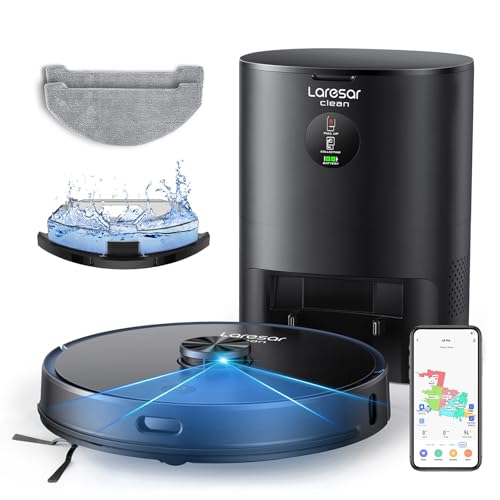

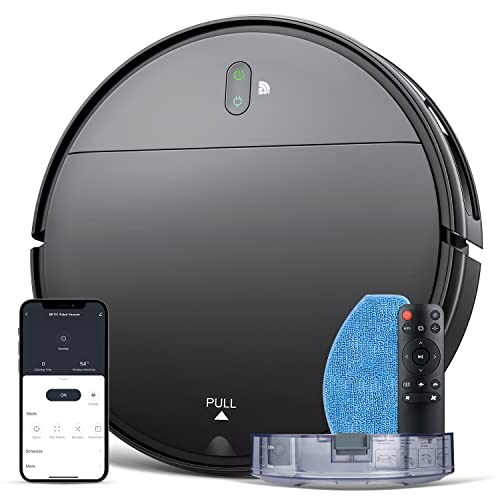
Understanding Smart Robot Mops
Smart robot mops represent a fascinating evolution in home cleaning technology, designed to make household chores simpler and more efficient. These compact, automated devices not only vacuum, but they also mop your floors, delivering a comprehensive cleaning solution with minimal human intervention. As we delve into the details of smart robot mops, we will highlight their intelligent features, cleaning capabilities, and the types of surfaces they cater to.
What Are Smart Robot Mops?
Smart robot mops are automated cleaning devices that utilize advanced technology to navigate and clean floors without the need for manual labor. Equipped with a variety of sensors and smart software, these devices can mop wet or dry, adapting their cleaning methods based on your home’s needs. Unlike traditional mops, smart robot mops offer convenience and efficiency, allowing users to focus on other tasks while the device does the work.
Advanced Navigation Systems
One of the critical features of smart robot mops is their sophisticated navigation systems. These systems use a combination of laser sensors, cameras, and mapping technologies to efficiently navigate your space. For example:
Smart Sensors for Effective Cleaning
Smart robot mops come equipped with smart sensors that enhance their cleaning performance. These sensors help detect dirt, obstacles, and changes in floor types. For instance:
Connectivity Features
Today’s smart robot mops come with connectivity features that allow users to control them via mobile apps or smart home devices. This integration enables you to set schedules, adjust cleaning modes, and monitor cleaning performance remotely. Some popular examples include:
Cleaning Methods: Wet vs. Dry Mopping
Smart robot mops offer versatility in cleaning methods, typically categorized into wet and dry mopping. Understanding the difference is crucial in choosing the right device for your needs:
Suitable Surfaces for Smart Robot Mops
Smart robot mops are designed to clean a variety of surfaces efficiently. Here’s a breakdown of surface compatibility:
| Surface Type | Recommended Models |
|---|---|
| Hardwood | iRobot Braava Jet 240, Roborock S7 |
| Tiles | Ecovacs Deebot T8 AIVI, iRobot Roomba i7+ |
| Laminate | Neato Botvac D7, Braava Jet m6 |
| Carpet | Roborock S6 MaxV (dry vacuum only) |
Choosing a smart robot mop that effectively handles your specific flooring type can significantly enhance your cleaning experience.
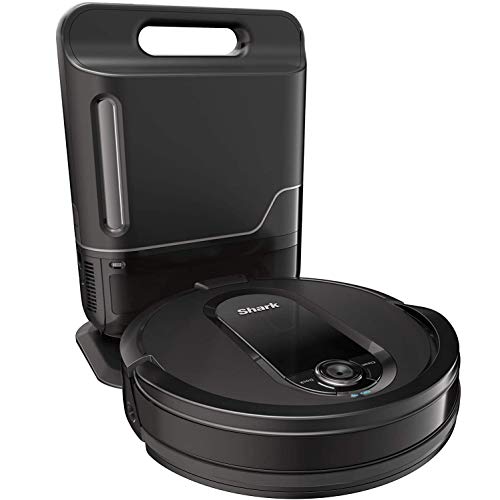


The Evolution of Vacuum Cleaners
Vacuum cleaners have come a long way since their inception, evolving from cumbersome manual devices to sleek, smart machines that require minimal human intervention. This journey reflects not just advancements in technology but also an increasing awareness of indoor air quality, efficiency, and convenience. In this blog section, we’ll delve into the significant milestones and key features that define the evolution of vacuum cleaners, covering everything from suction power to specialized functionalities.
Historical Overview: From Manual to Motorized
Early Beginnings
The first vacuum cleaner, known as the “suction sweeper,” was invented in the late 19th century. This hand-cranked, bellows-driven device was extremely primitive compared to today’s standards.
Rise of the Electric Vacuum Cleaner
In the 1900s, the first electric vacuum cleaner, the Hoover Model 700, made its debut and revolutionized home cleaning. It was bulky, but its suction power was far superior to manual sweepers.
Key Developments
Modern Features: What to Look For
Suction Power
Modern vacuum cleaners boast varying levels of suction power, crucial for effective cleaning. Brands like Dyson and Shark are often praised for their strong suction capabilities. The Dyson V15 Detect, for instance, utilizes a powerful motor and advanced sensor technology to customize suction power based on debris level.
Bag vs. Bagless Designs
Bagless vacuum cleaners, such as the Shark Navigator and Bissell CleanView, have risen in popularity due to their easier maintenance and lower long-term costs. However, traditional bag designs, like those in the Miele Complete C3, are preferred by some for their superior filtration capabilities, which can be essential for allergy sufferers.
Additional Functionalities
Effectiveness on Different Floor Types
Different vacuum cleaners perform differently depending on the type of flooring. Here’s a quick breakdown:
| Floor Type | Recommended Vacuum Models | Key Features |
|---|---|---|
| Carpet | Dyson Ball Animal 2, Hoover WindTunnel | Powerful suction, motorized brush rolls |
| Hard Floors | Shark Rocket, Bissell CrossWave | Hard floor cleaning modes, dust mop capabilities |
| Mixed Flooring | iRobot Roomba i7+, Tineco A11 Hero | Smart technology, adaptability to various surfaces |
Impact on Indoor Air Quality
The right vacuum cleaner can significantly improve your home’s air quality. For instance, homes equipped with vacuum cleaners that utilize HEPA filters can reduce the levels of allergens and dust, providing a healthier environment, particularly for those with asthma or allergies.
The Rise of Smart Technology: Robotic Vacuums
As technology has progressed, robotic vacuums have gained traction, blending convenience with innovation. The iRobot Roomba s9+ and Ecovacs Deebot Ozmo T8 are perfect examples of how robotic vacuums have evolved. These models can map out your home, schedule cleanings, and even be controlled via smartphone apps. They excel in maintaining cleanliness with minimal effort from users.
Key Features of Robotic Vacuums
This transformation of vacuum cleaners mirrors our growing desire for efficiency, health, and ease of use, providing tools equipped for contemporary living. The evolution from manual to smart devices illustrates not just a change in functionality, but a broader shift towards the integration of technology in maintaining our living spaces.


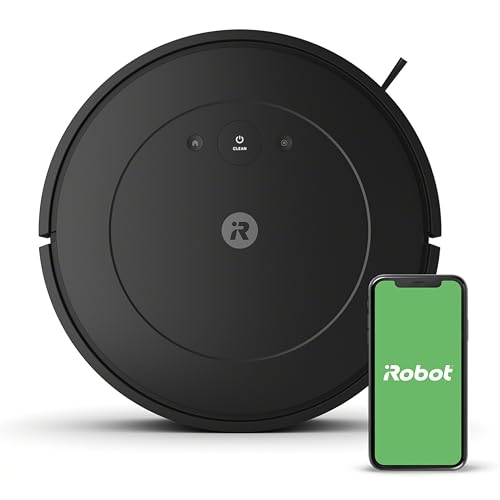
Comparing Cleaning Efficiency and Usability
When it comes to maintaining a clean home, understanding the efficiency and usability of cleaning devices can make a significant difference. In this section, we will delve into how smart robot mops and vacuum cleaners stack up in terms of cleaning efficiency and user experience by examining several key factors.
Cleaning Time and Coverage Area
Cleaning Time
One of the standout features of robot devices is their time-saving potential. For instance, the iRobot Braava Jet m6 can clean up to 1,000 square feet in under an hour, allowing you to focus on other tasks while it operates. In contrast, traditional vacuum cleaners like the Dyson V11 Torque Drive may require more hands-on supervision, but they provide deep cleaning in a shorter amount of time thanks to their powerful suction.
Coverage Area
Both classes of machines are designed to cover large areas efficiently, but their strategies differ.
Comparison of Cleaning Time and Coverage Area:
| Feature | iRobot Braava Jet m6 (Robot Mop) | Dyson V11 Torque Drive (Vacuum) |
|---|---|---|
| Cleaning Time | Up to 1,000 sq. ft. in 60 mins | Deep clean in approximately 30 mins for similar area |
| Coverage Area | Map-based navigation | Requires manual adjustment |
Frequency of Cleaning Required
Robot Mops typically require more frequent cleaning sessions due to their surface cleaning nature. For example, if you run the iRobot Braava Jet m6 daily, you may find it easily manages dust and minor spills, requiring less intervention from you. However, it might not be enough if heavy cleaning is needed.
Vacuum Cleaners, like the Bissell CrossWave, may be used less frequently but are more effective for deep cleaning. You could use the vacuum once a week, giving it an opportunity to pull up ground-in dirt and allergens, which robot mops might overlook.
User Experience and Ease of Use
Ease of Use
Both types of devices are designed for convenience, but each offers its unique perks.
Maintenance Requirements
Each device has different maintenance needs, which can affect your choice:
Fit into Busy Lifestyles
In today’s fast-paced environment, having cleaning appliances that accommodate busy lifestyles is crucial.
Summary of Key Points
By analyzing cleaning efficiency and usability, homeowners can make informed decisions about which cleaning device best meets their individual needs and lifestyle.
Choosing the Right Cleaning Solution for Your Home
In conclusion, the comparison between smart robot mops and vacuum cleaners reveals that each has its distinct strengths and weaknesses. Smart robot mops excel in their ability to simultaneously sweep and mop hard floors, making them ideal for maintaining cleanliness in smaller spaces with limited traffic. However, they may struggle with deep cleaning carpets and larger areas. On the other hand, traditional vacuum cleaners offer powerful suction and versatility, making them the preferred choice for deep cleaning across various surfaces, though they require more manual effort.
When deciding between the two, individuals should consider key factors such as the size of their home, specific cleaning needs, and budget constraints. Those with larger spaces, diverse flooring types, or substantial amounts of debris may lean towards a vacuum cleaner, while those with smaller homes and a focus on maintaining hard floors might find smart robot mops more suitable. Ultimately, understanding these elements will empower readers to make an informed decision that aligns with their cleaning requirements.


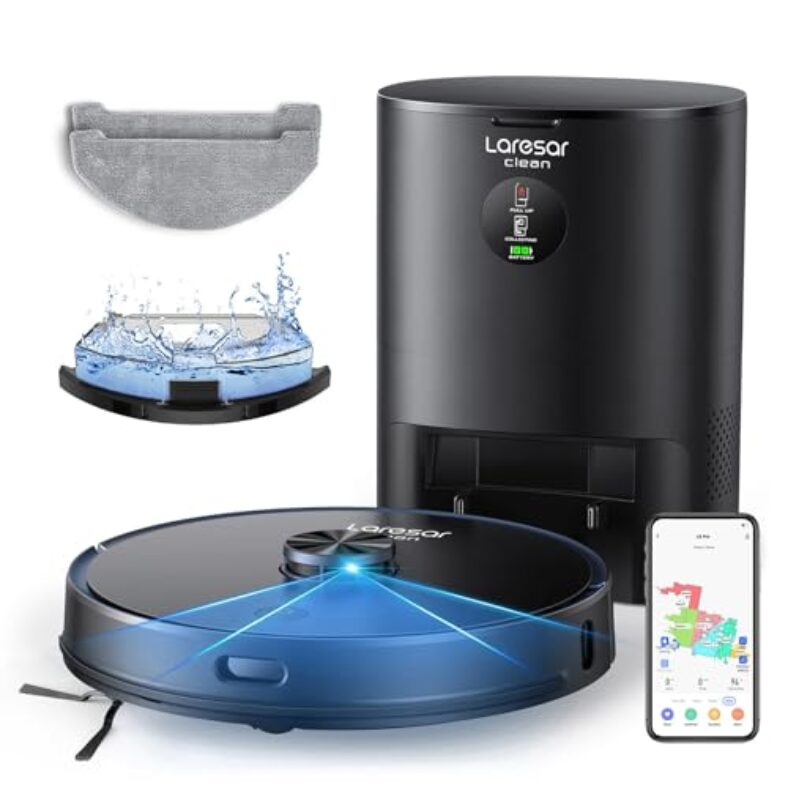
Leave a Reply